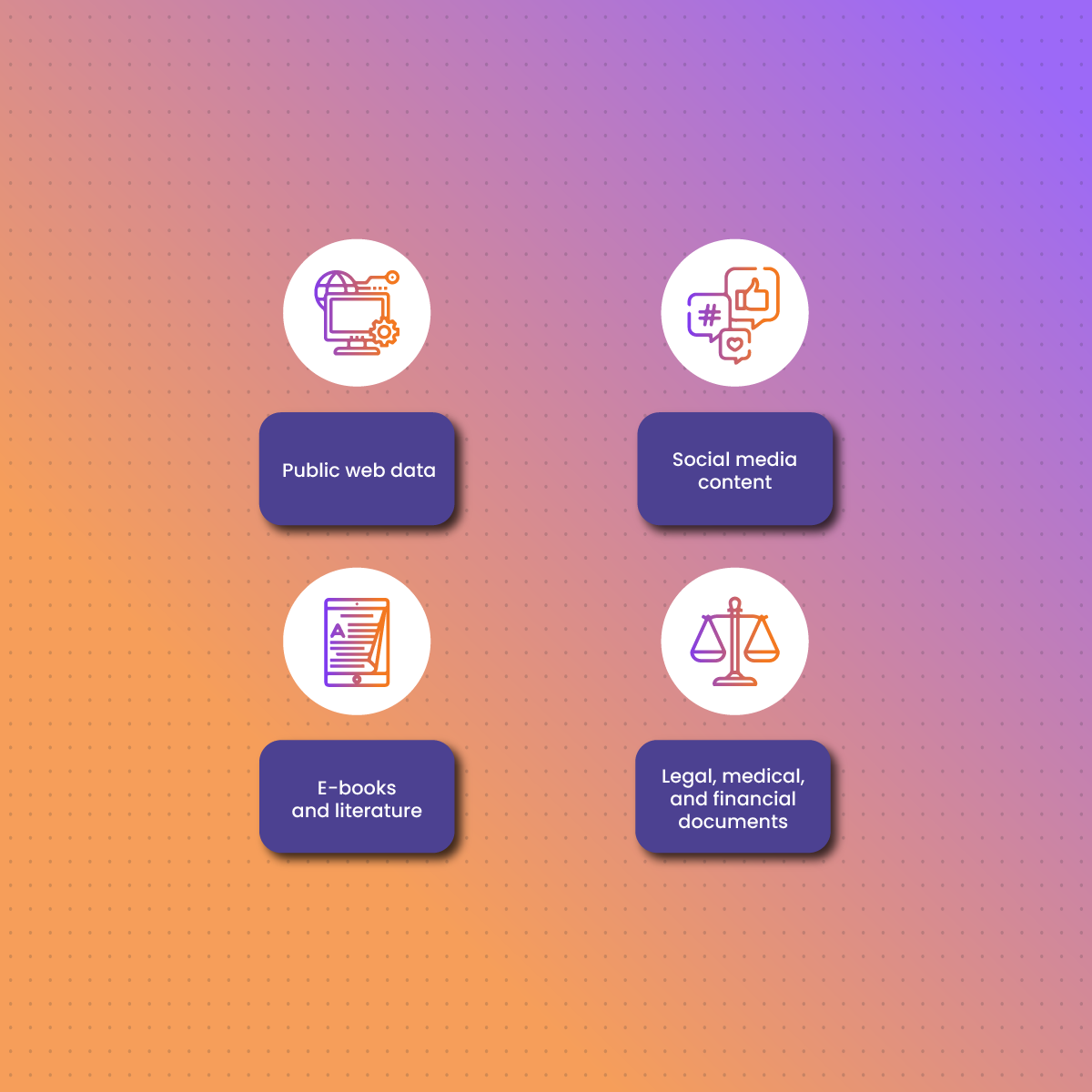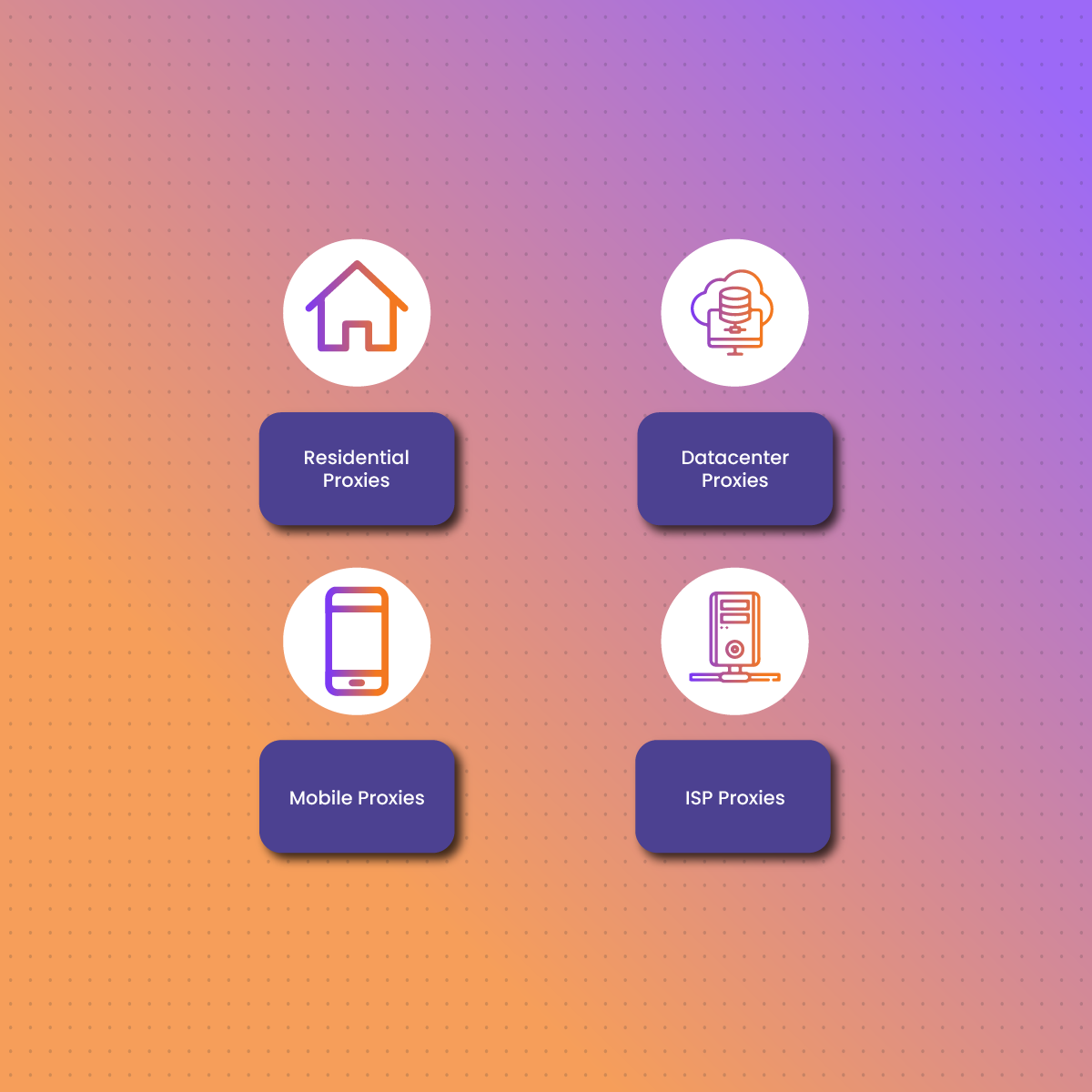Large Language Models (LLMs) have become the backbone of modern AI applications, powering everything from chatbots and virtual assistants to automated content generation and real-time translation systems. These models, including well-known architectures like GPT, LLaMA, and PaLM, require vast amounts of high-quality data to train effectively. The better the data, the more accurate, nuanced, and context-aware the LLM becomes.
However, training LLMs is not without challenges. Accessing diverse, large-scale datasets is often difficult due to geo-restrictions, IP bans, and security concerns. Many valuable data sources impose rate limits and anti-bot measures, making automated data collection a complex task. Additionally, bias in training data can result in skewed or inaccurate AI models, reinforcing stereotypes and reducing generalizability.
To overcome these obstacles, AI researchers and companies are turning to proxies as a key tool for seamless, scalable, and secure data collection. Proxies act as intermediaries between the data collector and the target website, enabling anonymous, unrestricted access to global datasets while maintaining high-speed connections. With the right proxy solutions—such as those offered by NetNut—LLM developers can efficiently gather the data they need while avoiding detection, ensuring compliance, and improving AI model quality.
This article will explore the role of proxies in training LLMs, the challenges they help overcome, and the best practices for integrating them into AI data collection workflows. By the end, it will be clear why proxies are an essential tool for developing next-generation AI models.
Why LLMs Require Large-Scale Data Collection
Training a Large Language Model (LLM) requires an enormous amount of high-quality, diverse, and representative data. These AI models learn patterns, relationships, and contextual meanings by processing billions of text samples from various sources. The more comprehensive the dataset, the better the model performs in understanding context, generating coherent responses, and adapting to different use cases.
The Role of Data in LLM Training
LLMs learn through a process called self-supervised learning, where they predict missing words, phrases, or sentences based on surrounding text. To achieve this, they must be trained on large-scale datasets that include:
- Public web data – News articles, blogs, Wikipedia pages, and research papers.
- Social media content – Conversations, forum discussions, and real-time interactions.
- E-books and literature – Books, academic publications, and historical texts.
- Legal, medical, and financial documents – Industry-specific terminology and structured language.
By training on such diverse datasets, LLMs improve their ability to understand different writing styles, interpret nuances, and generalize across topics.
Key Challenges in Training LLMs Without Proxies
Training Large Language Models (LLMs) without proxies presents significant obstacles that can limit data access, slow down model development, and introduce security risks. Since LLMs require massive datasets from diverse sources, direct data collection often results in geo-blocking, IP restrictions, and legal complications. Below are the primary challenges AI companies face when attempting to gather data without proxies.
1. Geo-Restrictions and Limited Data Access
Many valuable datasets are region-specific and inaccessible to users outside certain countries. For example, government databases, localized news outlets, and academic repositories often restrict access based on IP location. Without proxies, AI developers struggle to collect data from different regions, leading to linguistic and cultural biases in LLM training.
For instance, an AI model trained primarily on English-language sources may perform poorly when generating responses in non-English languages. Similarly, an AI system trained on Western news sources may lack balanced perspectives on global events. Proxies solve this issue by providing localized IP addresses, allowing LLMs to access diverse content from multiple geographic locations.
2. IP Bans, Rate Limits, and CAPTCHA Challenges
Websites implement anti-bot measures to prevent large-scale automated data collection. When an AI system sends too many requests from the same IP address, it is often flagged as suspicious, rate-limited, or blocked entirely. Websites may enforce:
- IP bans, preventing further access from the same address.
- Rate limits, restricting the number of requests per hour or day.
- CAPTCHA challenges, requiring human verification before accessing content.
Without proxies, AI developers must manually request access, slowing down the data collection process and introducing inefficiencies. Rotating proxies solve this problem by automatically switching IP addresses, preventing detection and ensuring uninterrupted data extraction.
3. Security and Anonymity Risks
Scraping data without proxies exposes AI infrastructure to cybersecurity threats, tracking, and potential legal action. Websites can detect and log direct data requests, revealing the origin of AI scrapers. This lack of anonymity increases risks such as:
- IP tracking, where target websites monitor AI scraping activity.
- Legal liabilities, if AI companies unintentionally violate terms of service.
- Data leaks, where sensitive scraping operations are exposed to competitors.
Proxies provide an additional layer of security by masking the scraper’s real identity, reducing the risk of detection and ensuring compliance with data privacy regulations.
4. Data Bias and Limited Representation
Without proxies, AI developers may be forced to rely on data that is easily accessible, rather than a balanced representation of the internet. This can lead to:
- Cultural biases, where models disproportionately learn from certain demographics.
- Linguistic limitations, reducing accuracy in less-represented languages.
- Political or ideological biases, depending on the availability of information.
Proxies enable AI systems to access a more diverse dataset, improving LLM generalization and ensuring fairer, more neutral language generation.
5. Scalability and Infrastructure Constraints
Manually collecting and curating data for LLM training is time-consuming and inefficient. Large-scale AI projects require:
- High-speed data collection to process millions of web pages.
- Uninterrupted access to multiple data sources for continuous training.
- Distributed request handling to prevent overloading a single network.
Without proxies, LLM training operations become slow, fragmented, and prone to interruptions. Proxies optimize the process by distributing requests across a global network of IP addresses, ensuring faster and more scalable data collection.
How Proxies Solve These Challenges
By integrating residential, datacenter, mobile, and ISP proxies, AI developers can:
- Bypass geo-restrictions to collect diverse, location-specific data.
- Avoid IP bans and CAPTCHAs through intelligent IP rotation.
- Protect AI infrastructure from detection and cybersecurity threats.
- Ensure scalable, high-speed data retrieval for efficient model training.
In the next section, we’ll explore how proxies actively enhance LLM training and improve data collection strategies.
How Proxies Improve LLM Training and Data Collection
Proxies play a crucial role in enhancing the efficiency, security, and scalability of Large Language Model (LLM) training. By acting as intermediaries between AI scrapers and target websites, proxies bypass restrictions, prevent detection, and optimize data retrieval, ensuring LLMs have access to the diverse datasets they need. Below are the key ways proxies improve LLM training.
Bypassing Geo-Restrictions for Unbiased, Global Data
LLMs must be trained on region-specific content to develop a well-rounded understanding of different languages, cultures, and perspectives. However, many valuable sources—such as local news sites, government records, and academic databases—are restricted based on IP location.
Proxies allow AI scrapers to switch between IPs from different countries, providing unrestricted access to geo-blocked data. This ensures LLMs learn from a diverse set of sources, reducing regional biases and improving multilingual capabilities.
Avoiding IP Blocks, Rate Limits, and CAPTCHA Challenges
Websites implement anti-scraping measures to detect and block automated requests. Without proxies, AI scrapers often face:
- IP bans, which permanently block data access.
- Rate limits, restricting the number of requests per user.
- CAPTCHAs, requiring human verification before loading content.
Proxies rotate IP addresses automatically, distributing traffic across multiple connections. This prevents websites from detecting repeated requests, ensuring uninterrupted data collection. NetNut’s high-speed rotating proxies provide seamless access to web data, allowing AI companies to scale their data-gathering operations efficiently.
Enhancing Security and Anonymity in AI Data Collection
Scraping data at scale exposes AI infrastructure to tracking, cybersecurity threats, and legal scrutiny. Websites can detect direct connections from AI scrapers, leading to IP blacklisting, potential legal disputes, or even competitive data leaks.
By using proxies, AI companies can mask their real IP addresses, protecting their scraping infrastructure from detection. Residential and ISP proxies are particularly effective because they use real user IPs, making them indistinguishable from human traffic. This improves privacy, security, and compliance with data protection regulations.
Optimizing Speed and Scalability for Large-Scale Data Extraction
Training LLMs requires high-speed, uninterrupted data collection, but server slowdowns, connectivity issues, and inefficient request handling can impact model performance.
Proxies distribute data requests across multiple IPs, reducing load on individual connections and ensuring faster response times. Datacenter proxies, in particular, offer high-speed, cost-effective solutions for large-scale data extraction. AI companies working with NetNut’s premium proxy infrastructure benefit from low-latency, high-bandwidth connections, ensuring efficient and scalable data collection.
Ensuring Ethical and Compliant Data Collection
AI companies must comply with GDPR, CCPA, and ethical AI guidelines when scraping data for LLM training. Proxies help enforce compliance by:
- Filtering out restricted content to prevent the collection of personally identifiable information (PII).
- Providing region-based access controls to align with data residency laws.
- Anonymizing requests to ensure secure, privacy-focused data retrieval.
By integrating proxies into LLM training workflows, AI companies reduce legal risks while maintaining high-quality data collection standards.
The Impact of Proxies on LLM Model Performance
By leveraging proxies, AI developers can:
- Access global, unbiased datasets for fairer, more representative LLMs.
- Prevent IP bans and CAPTCHA interruptions, ensuring continuous data flow.
- Enhance model security and anonymity, reducing risks of detection or legal issues.
- Scale LLM training efficiently, optimizing speed, performance, and reliability.
In the next section, we’ll explore the best types of proxies for training LLMs and how to choose the right one for your project.
Best Types of Proxies for Training LLMs
Selecting the right type of proxy is essential for efficient, scalable, and secure LLM training. Different proxy types offer unique advantages, depending on the specific data collection requirements of an AI project. Below, we explore the best proxies for training Large Language Models (LLMs) and their ideal use cases.
Residential Proxies: Best for Bypassing Detection and Accessing Diverse Content
Residential proxies use real IP addresses assigned by Internet Service Providers (ISPs), making them appear as legitimate users. These proxies are ideal for undetectable, large-scale data collection, allowing AI scrapers to:
- Bypass geo-restrictions and access country-specific datasets.
- Avoid IP bans and CAPTCHAs by mimicking real user behavior.
- Extract high-quality, natural web content for unbiased LLM training.
Since residential proxies are more trusted by websites, they are perfect for scraping sensitive data sources, such as news portals, government databases, and academic research sites.
Datacenter Proxies: Best for High-Speed, Large-Scale Scraping
Datacenter proxies are fast, scalable, and cost-effective, making them suitable for AI projects that require bulk data extraction. They offer:
- High-speed connections, ensuring quick retrieval of training data.
- Scalability, allowing AI developers to collect vast amounts of data without bottlenecks.
- Lower cost, making them a budget-friendly option for large-scale LLM training.
However, datacenter proxies are more likely to be flagged by websites since they originate from cloud-based servers rather than real users. They work best for scraping publicly available datasets, forums, and open-source repositories.
Mobile Proxies: Best for AI Models Processing Mobile Data
Mobile proxies use IP addresses from real mobile devices (3G, 4G, 5G), making them ideal for AI models that require mobile-based content and app-specific data. These proxies allow LLMs to:
- Scrape mobile-optimized websites and applications for chatbot and NLP training.
- Collect data from mobile advertising networks to improve AI-driven ad targeting.
- Analyze user interactions in mobile environments for voice assistants and conversational AI.
Because mobile IPs frequently change, they provide exceptional anonymity, reducing the risk of IP tracking or bans.
ISP Proxies: Best for Balancing Speed and Authenticity
ISP proxies combine the legitimacy of residential proxies with the speed of datacenter proxies, offering:
- Fast, stable connections, reducing data retrieval delays.
- High trust levels, making them harder to detect than datacenter proxies.
- Reliable access to premium data sources, such as subscription-based content.
ISP proxies are best suited for enterprise-level AI data collection, where both speed and stealth are equally important.
How to Choose the Right Proxy for Your LLM Project
The choice of proxy depends on the specific needs of an LLM training workflow:
- If bypassing geo-restrictions is a priority → Use residential or mobile proxies.
- If high-speed scraping is required → Use datacenter proxies.
- If long-term stability and reliability are needed → Use ISP proxies.
- If scraping mobile data sources is the goal → Use mobile proxies.
AI companies looking for scalable, secure, and high-performance proxy solutions can rely on NetNut’s global proxy network, which offers residential, datacenter, mobile, and ISP proxies tailored for AI-driven data collection.
In the next section, we’ll explore best practices for implementing proxies in LLM training to maximize efficiency and minimize detection risks.
How To Implement Proxies for Efficient LLM Training
Integrating proxies into LLM training workflows requires strategic implementation to ensure efficient data collection, high-speed processing, and minimal detection risks. Simply using proxies isn’t enough—AI developers must follow best practices to optimize proxy usage, prevent disruptions, and maintain compliance with ethical data collection guidelines. Below are key strategies for implementing proxies effectively in LLM training.
1. Selecting the Right Proxy Type for Your Data Needs
Choosing the correct proxy depends on the type of data being collected and the level of anonymity required.
Using a combination of proxy types can further optimize AI data collection. For example, residential proxies can be used for sensitive, geo-restricted data, while datacenter proxies handle bulk data extraction at high speeds.
2. Setting Up Proxy Rotation to Prevent IP Bans
LLM scrapers send millions of requests during data collection, which can trigger IP bans and anti-scraping mechanisms. Proxy rotation helps avoid detection by automatically switching IP addresses, ensuring continuous access to data sources.
- Rotating proxies assign a new IP for each request, preventing rate limits.
- Session-based rotation maintains the same IP for a set duration before switching, useful for authenticated sessions.
- Geo-rotation selects proxies from specific regions, enabling access to localized content.
With NetNut’s intelligent proxy rotation, AI developers can seamlessly rotate IPs without manual intervention, ensuring uninterrupted LLM training.
3. Optimizing Request Patterns to Mimic Human Browsing
Websites use bot detection algorithms to flag automated traffic. To avoid getting blocked, AI scrapers must mimic real user behavior by:
- Randomizing request intervals to prevent predictable traffic patterns.
- Varying headers, cookies, and user-agent strings to avoid fingerprinting.
- Implementing headless browsers (Selenium, Puppeteer) to simulate human-like interactions.
Combining proxy rotation with human-like browsing behavior makes LLM data collection more stealthy and effective.
4. Ensuring Compliance with Data Privacy Laws
LLM developers must adhere to GDPR, CCPA, and ethical AI guidelines when collecting data. To ensure compliance:
- Scrape only publicly available data to avoid legal risks.
- Anonymize requests using proxies to protect AI infrastructure.
- Monitor proxy usage to detect any compliance violations.
Working with a trusted proxy provider like NetNut ensures AI companies collect data ethically and securely while minimizing legal risks.
5. Monitoring Proxy Performance for Maximum Efficiency
To maintain high-speed and reliable data collection, AI companies must regularly monitor proxy performance.
- Track response times to detect slow proxies and optimize routing.
- Analyze success rates to identify blocked or flagged IPs.
- Automate proxy switching for seamless failover in case of connectivity issues.
NetNut’s enterprise-grade proxy solutions offer real-time analytics and 99.9% uptime, ensuring LLM scrapers operate at peak efficiency.
By following these best practices, AI developers can maximize data collection speed, maintain security, and ensure uninterrupted LLM training. In the next section, we’ll explore how AI and proxies are shaping the future of LLM development.
The Future of LLM Training with Proxies
As AI continues to advance, the training of Large Language Models (LLMs) is becoming more data-intensive, requiring smarter, more scalable, and ethically sound data collection strategies. The role of proxies in LLM development is also evolving, with new innovations enhancing efficiency, security, and compliance. Below are key trends shaping the future of LLM training with proxies.
1. AI-Driven Proxy Management for Smarter Data Collection
Future AI-driven web scrapers will automatically select and optimize proxy usage based on real-time factors such as:
- Website detection patterns – AI will analyze which proxies are most effective at bypassing anti-bot systems.
- Adaptive IP switching – Proxies will rotate dynamically based on success rates.
- Intelligent request distribution – AI will balance traffic between datacenter, residential, and ISP proxies for efficiency.
NetNut is already pioneering AI-optimized proxy solutions, ensuring that AI developers have access to self-learning, high-speed proxy management for scalable data collection.
2. Enhanced Security and Anonymity for LLM Training
As concerns over data privacy, cybersecurity threats, and AI ethics grow, proxies will play an even greater role in ensuring secure and anonymous LLM training. Future advancements will include:
- Stronger encryption protocols for anonymous data retrieval.
- AI-based threat detection to prevent web scraping from being tracked.
- Decentralized proxy networks to reduce reliance on centralized servers.
These security measures will protect AI companies from detection, legal risks, and competitive intelligence threats.
3. Ethical and Compliant AI Data Collection
As governments enforce stricter data protection laws (GDPR, CCPA, AI Act), the future of LLM training will require:
- Automated compliance monitoring to prevent scraping of restricted content.
- Built-in privacy filtering to avoid collecting personal data.
- Transparency in AI training datasets, ensuring ethical model development.
Proxies will enable legal and ethical web scraping by enforcing compliance measures while maintaining unrestricted access to public data.
4. The Rise of Real-Time Data for Adaptive LLMs
Future LLMs will not just be trained on static datasets—they will continuously update their knowledge using real-time web data. This requires high-speed, always-on proxy solutions to:
- Fetch breaking news, social media updates, and live trends for real-time AI responses.
- Improve chatbot accuracy by adapting to current events and new terminology.
- Enhance LLM personalization by analyzing user behavior and engagement data.
NetNut’s high-performance proxy infrastructure is designed to support real-time, low-latency data retrieval, making it ideal for next-generation LLM applications.
How Proxies Will Continue to Support AI Scaling
Looking ahead, proxies will remain a foundational tool for AI development, ensuring:
- Scalable data collection for rapidly growing LLMs.
- High-speed, real-time updates for continuously evolving AI models.
- Secure and ethical AI training, meeting legal and industry standards.
With proxies and AI working together, the future of LLM training will be more efficient, compliant, and capable than ever before.
In the final section, we’ll summarize the key takeaways and discuss why NetNut’s advanced proxy solutions are the best choice for AI-driven LLM development.
Why Choose NetNut for LLM Training?
NetNut’s enterprise-grade proxy solutions offer:
- A global network of residential, datacenter, mobile, and ISP proxies tailored for AI data collection.
- High-speed, rotating proxies to prevent detection and ensure continuous scraping.
- Real-time analytics and optimization tools for scalable LLM training.
- Compliance-focused proxy management, reducing legal and ethical concerns.
By leveraging NetNut’s advanced proxy infrastructure, AI companies can train more accurate, diverse, and scalable LLMs—without interruptions or security risks.
FAQ: How Proxies Can Enhance Training Large Language Models (LLMs)
To help AI developers and researchers better understand the role of proxies in LLM training, here are answers to some frequently asked questions.
1. Why do LLMs require large-scale data collection?
LLMs learn by analyzing massive amounts of text data to identify patterns, improve language understanding, and generate accurate responses. To ensure bias-free, high-quality, and well-generalized AI models, LLMs must be trained on diverse datasets, including:
- Web pages, news articles, and research papers.
- Social media conversations and real-world interactions.
- Multilingual and region-specific content to improve global adaptability.
Without access to large and varied datasets, LLMs may develop biases, knowledge gaps, or inaccuracies in their outputs.
2. How do proxies help with LLM training?
Proxies act as intermediaries between AI scrapers and target websites, enabling:
- Bypassing geo-restrictions to access region-specific data.
- Avoiding IP bans and rate limits to prevent disruptions in data collection.
- Ensuring security and anonymity by masking scraper identities.
- Optimizing speed and scalability, allowing AI developers to collect vast amounts of data efficiently.
By using proxies, AI companies can train LLMs with higher-quality, more diverse data without detection or interruptions.
3. How do proxies prevent IP bans and CAPTCHAs?
Websites monitor incoming traffic and block suspicious requests. Proxies help avoid detection by:
- Rotating IP addresses, ensuring each request comes from a different source.
- Using geo-targeted IPs, making requests appear as if they come from real local users.
- Randomizing user agents and headers, preventing fingerprinting.
- Implementing AI-powered CAPTCHA solvers to bypass verification challenges.
With NetNut’s rotating proxy solutions, AI companies can scrape data without triggering security blocks.
4. Can proxies help AI models train on real-time data?
Yes! Future AI models will require real-time updates to stay current with new trends, events, and language changes. Proxies enable:
- Scraping live news updates, social media posts, and financial data.
- Analyzing real-time search trends for adaptive AI applications.
- Maintaining fast, uninterrupted access to dynamic web content.
5. Why should AI companies use NetNut for LLM training?
NetNut offers industry-leading proxy solutions tailored for AI-driven data collection, with:
- A global network of residential, datacenter, ISP, and mobile proxies.
- Rotating IPs for seamless, undetectable scraping.
- Real-time analytics and performance monitoring.
- Enterprise-grade security and compliance-focused solutions.
By leveraging NetNut’s advanced proxy infrastructure, AI companies can train LLMs faster, more securely, and at scale—ensuring their models are well-equipped for real-world applications.









